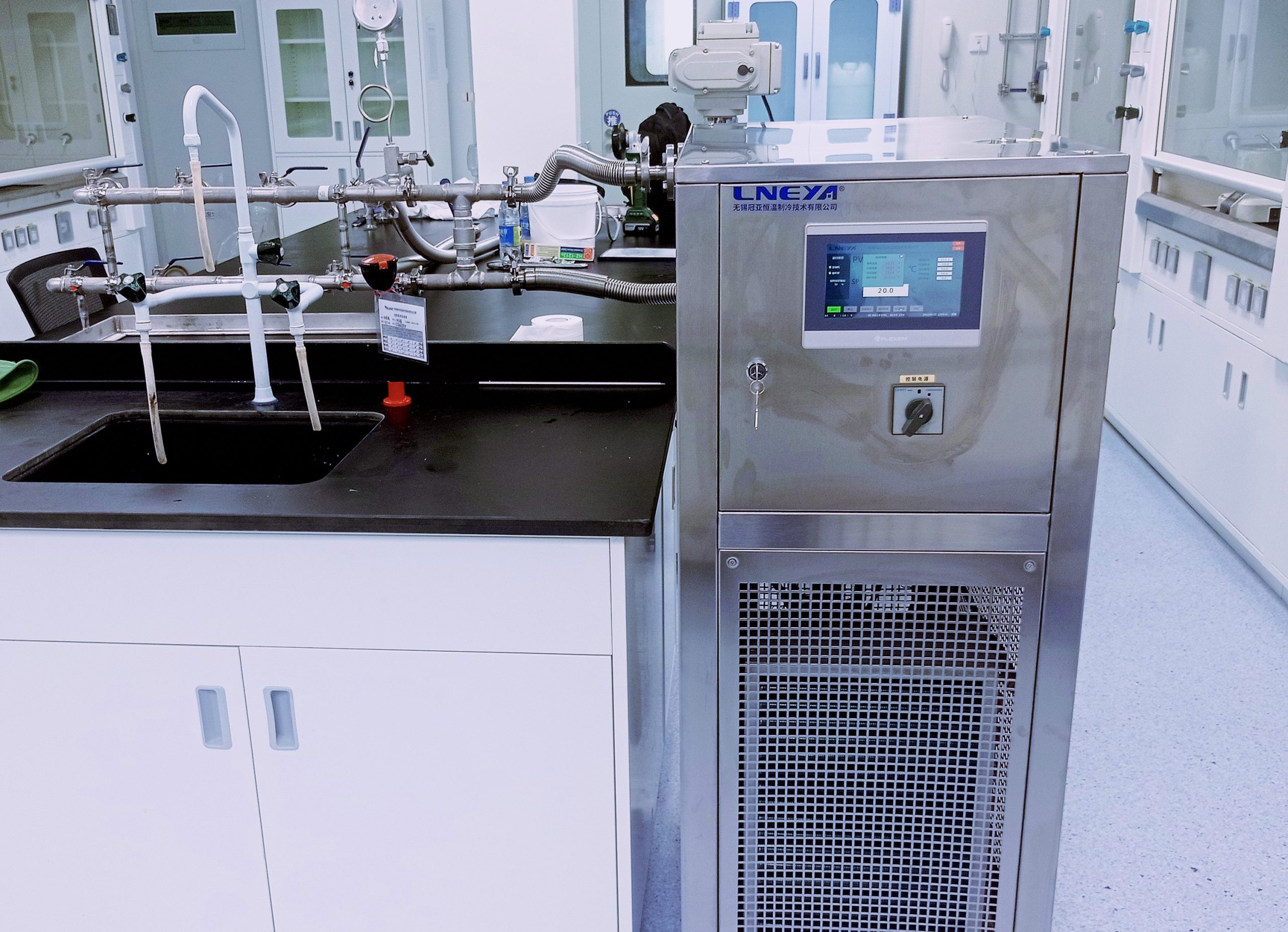There are usually three ways to control the temperature of laboratory reactors

1. Manual control: Manually operate the knob on the front of the reactor controller.
2. Control by PC: The PC and the controller are connected by a network cable, and the operation is carried out on the PC.
3. Controlled by thermostat: Silicone oil is heated through the thermostat, and the thermostat naturally has a temperature control function. Although the thermostat heating limit (usually 250°C) is not as high as that of electric heating (can be as high as 400-500°C), the thermostat rises and falls smoothly, and the low temperature can reach -60/-80°C.
Our LNEYA laboratory reactor temperature control system belongs to the third category. However, the temperature control range is from -120 degrees to 350 degrees. It adopts a fully enclosed pipeline design and a high-efficiency plate heat exchanger, which reduces the demand for heat transfer oil, improves the heat utilization rate of the system, and realizes rapid temperature rise and fall. Continuous temperature control can be achieved in the temperature range of minus 90 degrees to 195 degrees and minus 70 degrees to 220 degrees without pressure.
Jacketed glass reactors are popular in current chemical experiments. The supporting temperature control equipment has also become a matter of widespread concern in the industry. It is known that the cooling and heating temperature in the reaction process has an absolute influence on the reaction process and results. The analysis of the temperature control equipment’s ability to increase and decrease the temperature of the material has become the basic basis for choosing chiller. Then the cooling and heating capacity is not only estimated by imagination and experience, but requires scientific analysis and calculation methods, and needs to calculate the required heating power and cooling power according to the heating rate and cooling rate.
When our technicians communicate with customers, they will first understand the requirements of engineering parameters, such as high and low temperature, how long is the temperature control time, etc., so as to calculate the cooling power and heating power of the chiller required, and determine the available chiller. model, to give customers the most complete temperature control solution. If you also have this need, you can contact us.
Raccomandazioni correlate
-
The importance of temperature control equipment TCU in the pharmaceutical industry
9181.Low temperature conditions required for biochemical reactions inside the reactor: low-temperature drug synthesis, etc 2.Rapid cooling of raw materials to prevent drug spoilage, low-temperature crystallization and extraction. G...
Visualizza i dettagli -
Metodo di manutenzione giornaliera della macchina a ciclo di raffreddamento e riscaldamento dell'olio di trasferimento di calore
1107La macchina a ciclo di raffreddamento e riscaldamento ad olio termoconduttore è un set di supporto per vari reattori dell'industria farmaceutica e chimica. Il reattore può essere utilizzato per il raffreddamento o il riscaldamento e ha un elevato rapporto di efficienza energetica. Non richiede...
Visualizza i dettagli -
Lneya’s high and low temperature cooling circulator instructions
1067The high and low temperature cooling circulator is developed and produced by LNEYA using its refrigeration and heating temperature control technology. When using high and low temperature cooling circulators, users are advised to use them according...
Visualizza i dettagli -
The Screw Chiller Factory With Noise Should Be Checked And Repaired In Time
991Before we use an industrial screw chiller factory, we will check all aspects of it, such as parts inspection, configuration, noise, and so on. What should I do if there is noise in the screw chiller during use? Do I need someone to repair it? The ...
Visualizza i dettagli
 Refrigeratori industriali LNEYA Produttore Fornitore
Refrigeratori industriali LNEYA Produttore Fornitore











